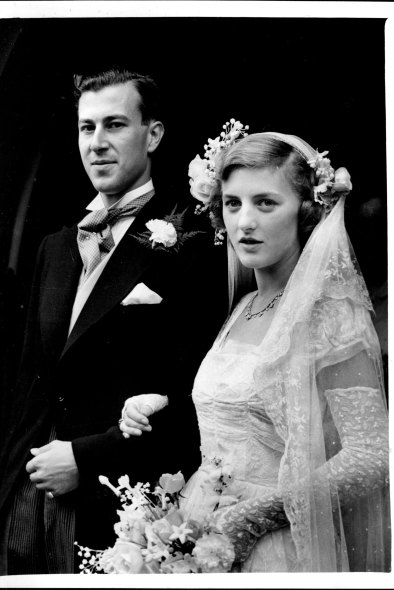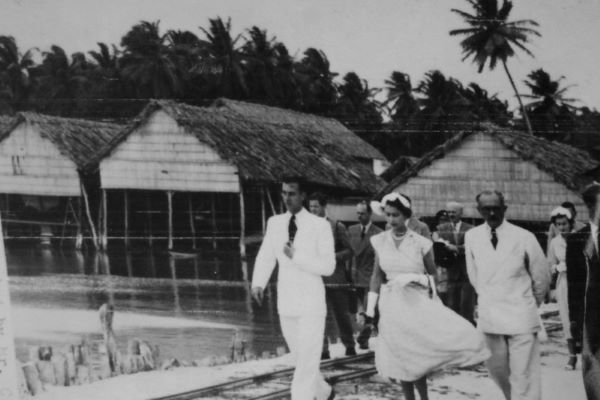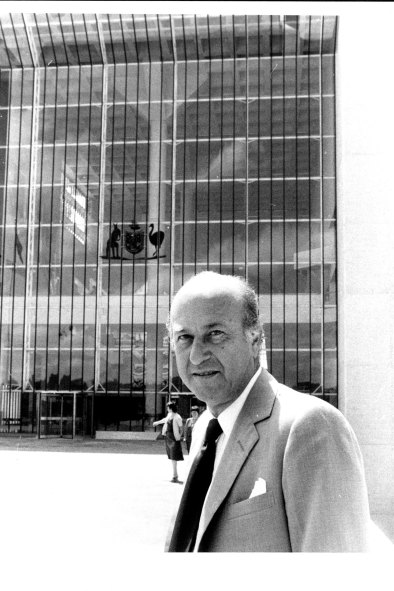The Cocos-Malays developed a unique identity, mixing Islamic culture with Scottish traditions; Muslim weddings were often accompanied by Caledonian reels.
Many saw the Cocos as a model community, one British traveller at the turn of the 20th century calling it a “species of Arcadia”. There were, he observed, “no police, no crimes, no trade unions, no strikes. Mr Ross [John’s grandfather, George] was king, doctor, parson, magistrate and merchant, all rolled into one … the friendliness, well-being and content of his subjects afforded a lesson to many a more enlightened kingdom.”
But the outside world could not be kept at bay forever, and during World War II, the Cocos became an important transit point for the Allies. After John’s father died of a heart attack during a Japanese bombing raid in August 1944, the British military took control of Home Island until young John returned to take up his inheritance in July 1946.
John Cecil Clunies-Ross was born on November 29, 1928, one of five children of John Sidney Clunies-Ross, the fourth “king” of the Cocos, and Rose (nee Nash). He spent most of his early years in Britain, taking a degree in sociology at the University of London and studying colonial administration at the University of Oxford.
Returning to the Cocos as “king”, or “Tuan Besar” (“Big Master” in Malay) after World War II, Clunies-Ross maintained the paternalistic traditions of his ancestors, overseeing a social welfare program, including optional retirement with pension at 60, along with free healthcare, housing and schooling.

In 1951, he married Daphne Parkinson, from Burnley in Lancashire, and in 1954, the couple received the newly crowned Queen Elizabeth and the Duke of Edinburgh, who were entertained by islanders dancing their own version of a Highland reel accompanied by Malaysian violins and gandongs (drums).
A year after the Queen’s visit, however, the British government transferred administrative control from Singapore to Australia, though as Clunies-Ross owned all the land, he felt able to declare that he did not regard himself as subject to Canberra. In 1951, Australia had bought land on West Island for an airfield; Clunies-Ross confined Australian officials to the island, forbade his subjects to talk to them and continued to rule, his authority symbolised by the long dagger he wore in his belt.

His feudal kingdom triggered columns of indignation from liberal-minded Australian journalists, and in 1974, Prime Minister Gough Whitlam galvanised a UN mission into visiting the islands. The mission duly condemned the “anachronistic and feudal” relationship between the Clunies-Ross family and the Malays and demanded democratic reform.
Though Clunies-Ross dismissed claims that he ran a feudal state as “nonsense”, the UN report prompted the Australian government to grant powers to its local island administrator to take charge of education, healthcare and sale of food, and to replace the Cocos rupee with the Australian dollar.
In 1978, Australia took full control and forced Clunies-Ross to sell his land, under threat of compulsory acquisition, except for Oceania House and a plot of two acres, for $6.25 million (Clunies-Ross had asked for $35 million, today worth about $188 million).
Clunies-Ross continued to wield significant influence on the islands and Australian politicians became increasingly convinced that he had to be made to leave if the Cocos people were to be aligned to Australian democratic norms.
In 1982, a home affairs minister in the government of Malcolm Fraser warned of “countervailing forces including the influence of Mr Clunies-Ross”, and in 1983, after a territories minister complained of a “master-servant” relationship between Clunies-Ross and locals that allowed the “king” to hold sway, the government of Bob Hawke attempted to force the sale of Oceania House, only to be forced to retreat when Clunies-Ross successfully challenged the proposed expropriation in Australia’s High Court.

The government then ordered that the Clunies-Ross family shipping company, which had been bought with proceeds from the original sale of their land, could not be awarded any government work, and in 1986 Clunies-Ross was declared bankrupt.
Two years before, in a UN-supervised referendum, the islanders had voted by 261 to 32 for full integration with Australia. Clunies-Ross, who had lobbied the islanders to vote for independence or free association, moved to a Perth suburb with his wife and in 1991 the Hawke government agreed to pay $1.55 million to buy Oceania House. In 1993, Clunies-Ross was reported to be working as a sales director for a clothing catalogue company.
In 2007, a newspaper observed: “Even after 30 years, the [Cocos] community argues over whether the Clunies-Ross were benevolent dictators or exploitative colonialists.”
John Clunies-Ross’s wife, Daphne, died in 2013. He is survived by three sons and two daughters.
The Telegraph, London






